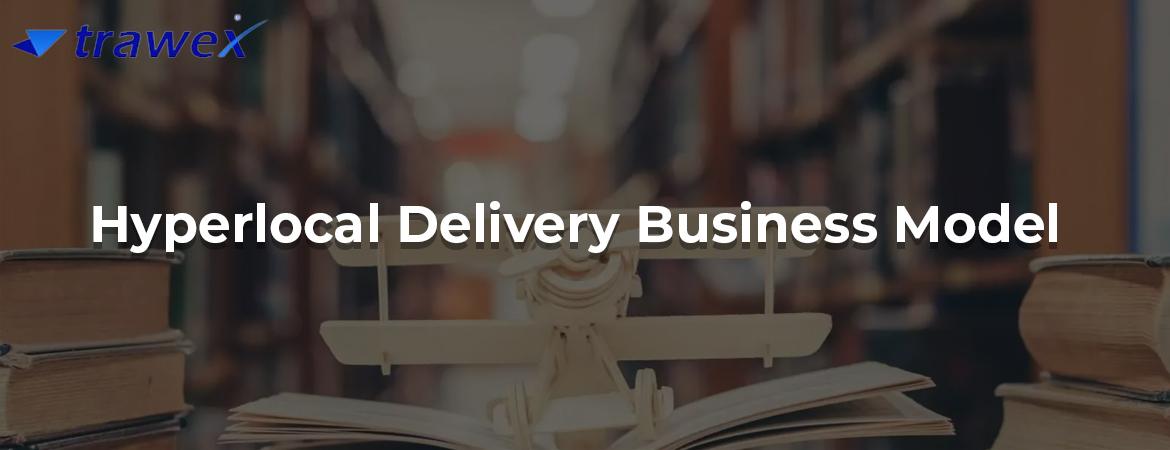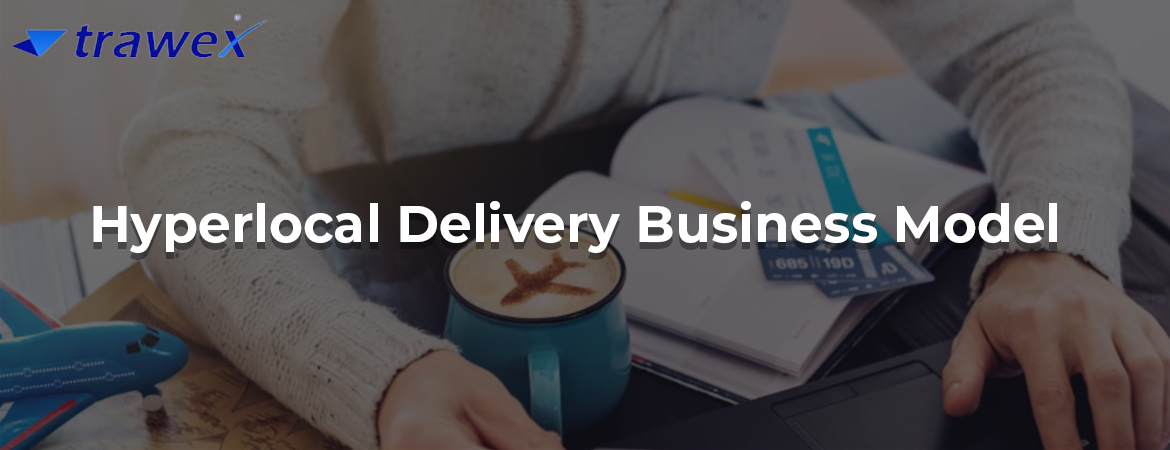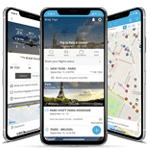Awarded Best Travel Software Company 2019
Africa
Caribbean
- Antigua & Barbuda
- Anguilla
- Aruba
- Barbados
- Saint Barthelemy
- Bermuda
- Bonaire St Eustatius
- Bahamas
- Curaçao
- Dominica
- Dominican Republic
- Grenada
- Guadeloupe
- Jamaica
- Saint Kitts and Nevis
- Cayman Islands
- Saint Lucia
- Saint Martin
- Martinique
- Puerto Rico
- Sint Maarten
- Turks & Caicos Islands
- Trinidad and Tobago
- Saint Vincent & Grenadines
- U.K. Virgin Islands
- U.S. Virgin Islands
Middle East
Europe
- Andorra
- Albania
- Armenia
- Austria
- Azerbaijan
- Bosnia and Herzegovina
- Belgium
- Bulgaria
- Belarus
- Switzerland
- Cyprus
- Czech Republic
- Germany
- Denmark
- Estonia
- Spain
- Finland
- Faroe Islands
- France
- United Kingdom
- Georgia
- Gibraltar
- Greenland
- Greece
- Croatia
- Hungary
- Ireland
- Iceland
- Italy
- Liechtenstein
- Lithuania
- Luxembourg
- Latvia
- Monaco
- Moldova
- Montenegro
- Macedonia
- Malta
- Netherlands
- Norway
- Poland
- Portugal
- Romania
- Serbia
- Russia
- Sweden
- Slovenia
- Slovakia
- San Marino
- Turkey
- Ukraine
- Kosovo
- Georgia

Hyperlocal Delivery Business Model
Empower On-Demand Hyperlocal Delivery along with How Hyperlocal Delivery Works to build your business.
Trusted by World’s Leading Travel Brands
Hyperlocal Delivery Business Model - A Powerful & Ready-To-Go Hyperlocal Ordering & Delivery Marketplace Platform
Trawex delivers the world's best hyperlocal marketplace software having 100+ eCommerce features to start your dream hyperlocal ordering & delivery platform on both web and mobile devices.

Smartphones have become the game-changer for the on-demand delivery business models. Buying groceries to ordering food, purchasing medicine to renting furniture, the rise of on-demand apps have made our lives easier than before.
Consumers now prefer to get all their basic needs services at their doorstep so that they can save that amount of time and can relax till their order gets delivered.
These on-demand apps have given acceleration to one such business that is known as hyperlocal business. The hyperlocal delivery business model is a perfect example of how technological advancements can unite with the age-old favorite shopping methods.
What is the Hyperlocal Delivery Business Model?
The term ‘Hyperlocal’ refers to a small geographical area’. The hyperlocal delivery model is when the delivery of products is done within a particular geographical area. The pickup location from where the order is packed and the customer’s address should lie within the same Pin code.
This kind of delivery model works mostly in cases of groceries, medicines, regular household items, food delivery, and even services such as plumbers, electricians, carpenters, etc. The USP of hyperlocal e-commerce businesses lies in their ability to deliver products and services at unbelievably fast speed.
Best Online Hyperlocal Delivery Business Model - Complete Guide for Ordering and Delivery Marketplace
Trawex is a leading Hyperlocal Ecommerce Website development company, provides hyperlocal delivery business model to empower various business owners and enterprise to launch their own ecommerce store in both ios and android platform
We help eCommerce companies to carry out hassle-free, seamless pickup and delivery operations, with real-time tracking and management. Ecommerce companies now get better visibility and grab a larger customer base, with its focus only on the customer service with the E-commerce shipping management software.
We are one of the best professional eCommerce web development companies worldwide, and all our clients have experienced huge benefits through the implementation of our custom eCommerce development solutions. Our expert developers build customized e-commerce websites to build up your company completely while delivering success as well as an online business.
Trawex provides e-commerce web development support to clients with great software and development services for their exclusive requirements. Our highly dedicated developers ensure that our client requirements fully fill their deadlines.
How to build a Hyperlocal Delivery Network?

Choose the product you want to deliver or sell
- Firstly, you need to decide what products or services you would choose to deliver. Hyperlocal delivery models have tremendous utility and scope for success in a wide variety of sectors –restaurants, medicines, grocery, cabs, and hyperlocal logistics. You can target the local geographical locations and analyze the demand for a particular product or service.
Identify your Target Audience
- Study the response of customers towards previous businesses. Your target audience may be busy professionals who have no time to head down to a restaurant for a meal, or you may target senior citizens who are unable to walk to their nearest grocery store.
Market your product in your locality
- Your marketing strategy depends heavily on your target audience. You have to make your presence known by trying out different advertising methods that appeal to your audience.
Build local partnerships with delivery agents
-
Building a network is an essential part of any business. in this, you must create partnerships with two different parties – a delivery partner and the local merchants.
-
You could receive the customer's orders through your mobile app and ask the local merchants to send their delivery personnel to deliver the order. You can also opt for partnering with a delivery agency. Often delivery partners charge a fixed price per delivery and impose a minimum delivery cap.
Decide on a Revenue model
-
Your revenue model depends on two sources – commissions from the merchant-partners and delivery charges from the customers. Your local partners pay you an agreed percentage of the order amount as commission on every order placed from their store.
-
Your partners will be happy to pay you more if you bring them more business. You can charge your customers a convenience fee if you wish, as most businesses are providing free delivery services.
Launch a hyperlocal mobile app
- Now you need to start working on the platform. You need to build separate mobile apps for iOS and Android for each of the three parties – the merchants, the customers, and the delivery drivers. A feature-rich, user-friendly app plays a major role in creating a solid customer base.
Key Features of Hyperlocal Delivery Marketplace
- Hyperlocal marketplaces provide businesses an opportunity to connect with the locals in the vicinity for their shopping needs. Here are the core features enabling the popularity of the hyperlocal business model:
Distance calculation
- Hyperlocal marketplaces offer accurate distance calculation systems so that consumers can get details of the nearest store around just by typing the address.
Inventory management
- Hyperlocal marketplaces need to provide real-time location and inventory syncing so that customers can collect all details regarding the available stock items.
Customer chats
- Order mismatch is a reality and if there is a customer chat system in place, shoppers can be assured that their grievances and wrong product delivery issues would be resolved.
Delivery slot details
- Hyperlocal marketplaces offer this convenient feature for the customers that could be used by customers for checking the availability of delivery slots. This is an added convenience that helps customers book orders as per their time preferences.
Multiple store checkout
- Hyperlocal businesses make it possible for shoppers to place orders from another store just in case a particular shop doesn’t have that product available.
Vendor registrations
- Vendors can enroll themselves as sellers in a hyperlocal business model. The administrator interface of these marketplaces has the authority to permit sellers to register themselves and create vendor profiles.
Shipping management
- Sellers are given the option of adding multiple shipping areas, editing, and deleting them in a hyperlocal marketplace. There is also this option for auto fetching of the correct vendor location.
Admin support
- Admins in these marketplaces have the power to set multiple filtering options using criteria like zip code, country, distance, city, etc.
Different Hyperlocal Delivery Business Models

The Hyperlocal industry has a way of solving current problems in an advanced manner. This is the reason why the industry is gaining so much traction and becoming a great investment opportunity for entrepreneurs. But showing interest is not enough, owing to the fact that the industry is huge there are multiple ways in which you go about if you want to start a hyperlocal business.
There are multiple services that can be fulfilled by hyperlocal and you need to narrow your niche before you go any further. This will depend on your expertise as well as the demands of the area in which you want to open this business. Another thing to think about is the business model you will have for your company.
There are various models you can choose from. Additionally, these models are not black and white, you can also have some features from a particular model and pick others from a different business model. It all depends on your individual requirements.
Before we go any further, let’s understand these different models that occur under hyperlocal delivery to help you choose one.
1. Aggregator Model
-
An aggregator model is one of the most common hyperlocal delivery models because it is not capital intensive. In this model, the company acts as a mediator between offline retailers and consumers.
-
The company itself has no assets or inventory, all it does is partner with other retailers and then sell its products using its own platform. Hence, in this way, the company offers an online audience to the physical store and helps them in promoting their store to the consumers that live near them.
-
This model is most commonly seen under food delivery, grocery delivery, personal care services, and handyman delivery. For handyman delivery, you can receive services like plumbing, carpentry, electrician and gardening, etc.
-
Almost all of the services can be offered using this model because it generally only requires tie-ups with other retailers. A few of the examples of companies that follow this model include Postmates, Instacart, Zomato, Housejoy, Urbanclap, GrubHub, TaskRabbit, etc.
2. Single Store Model
-
The single-store model is generally implemented by retailers that have already set up their offline businesses and want to go online now. A Single store model generally sells products from only a particular retailer. It can be implemented when an offline retailer decides to build an app for its products or it can also be implemented by a company that has its app and now decides to hold its own inventory instead of selling the products of another retailer.
-
This model can be used to sell products under food ordering or can also be used to sell services under personal care. Companies like Dominos, Pizza Hut, Popeyes, and Chipotle have their own website that allows customers to purchase products and then get them delivered to their homes. These chains are a great example of a single-store model.
-
This model is also implemented by companies that deliver grocery items for a particular meal like HelloFresh and Blue Apron. They offer ingredients and recipes for meals and these ingredients are generally stored in their own warehouses.
3. Store Pick Model
-
Under the store pick model, consumers generally order stuff online but they pick up the items from the retailers themselves. This model is generally followed by companies that want their consumers to get the products they want at a time convenient for them.
-
This means that your order will be prepared for you before you reach the retailer, all you have to do is go there. It also makes sure that customers don’t have to wait in lines to pay at the store.
-
This model is generally followed by grocery businesses, for example, Tesco, Walmart, Target, and Safeway.
4. Hybrid Model
-
The hybrid model is generally a model that implements more than one of these other models. For example, some stores allow you to order products online as well as offer store pick-up offers. Examples include Instacart, DoorDash, Deliveroo, etc.
-
Offers From Local Retailers- There are also other hyperlocal apps that do not deliver any products to your doorstep but show you various offers and discounts you can receive from other retailers nearby. These apps are generally used to find discounts that you can avail in different stores and the same can be used either on websites or physical stores of these retailers.
-
With people becoming more and more open to the idea of online delivery, we think this is the right time to invest in a hyperlocal business. The idea behind these is very simple and can be implemented without huge amounts of capital. Once you sort the basic things, the only thing that is required is to stay on top of your customer service game.
People who start these companies are offering a great amount of exposure to offline stores as well as logistics partners. At the same time, they make sure that these retailers get maximum results without having to put in too much effort. It also helps customers as they get to try different stores out and test their quality and receive offers along with it.
It also makes sure that these customers are getting products of the best standard because now retailers know that the customers have more options. All in all, the hyperlocal industry has given a great push to all the stakeholders and made them be on their best game in order to service the customers in the best way possible.
Advantages of Adopting Hyperlocal Model
- The demand for online deliveries is increasing day by day, and no wonder local sellers are investing their resources in the hyperlocal business model. Key benefits of investing in the hyperlocal business model are:
Quick product deliveries
- Hyperlocal marketplaces provide businesses with an opportunity to start selling online. You can sell your products online at a quicker pace and establish a presence in the local markets.
Diverse product catalog
- Hyperlocal marketplaces offer a versatile inventory of stock items because all local sellers are available under a single platform here. Locals can connect with them for their shopping needs. In case a product isn’t available at one store, there are always other stores selling the required product.
No stringent packaging guidelines
- The best part about these marketplaces is that there are no strict packaging guidelines as the products are packed only as per their load capacity and shipment type.
No additional investments
- As the sellers sell online through listings on hyperlocal marketplaces, there is no need to spend resources in setting up a shop or facing stringent market competition.
Better inventory quality
- As a hyperlocal market is based on the shopping needs of local customers around, the inventory is always stocked with their preferred products. Customers don’t have to go beyond these markets to buy the desired goods.
Customizable delivery timings
- Unlike big e-commerce platforms, hyperlocal markets allow consumers to select their preferred time band for delivery. This is one convenient module for people to plan their purchases and delivery.
Services That Can Be Delivered Under the Hyperlocal Model
There are multiple products and services that can be availed with hyperlocal delivery, these include:
-
Grocery delivery
-
Food ordering services
-
Handyman services
-
Personal care services
-
Offers from local stores
Conclusion
A hyperlocal delivery system may be done with anything, such as taxis, automobiles, bikes, or public transportation, and it can happen with anything, such as car service, grocery, food, and so on. Today, the majority of hyperlocal delivery methods are just in time.
Building relationships with other merchants and delivery providers, targeting the proper audience, and developing a fantastic mobile app all take time. However, all of these factors will provide your company with the competitive advantage it requires.
Our primary goal at Trawex is to provide efficient and innovative e-commerce solutions and online marketplace extensions so that your e-commerce experience is as seamless as possible. We can assist and support you with anything connected to e-commerce, whether you want to establish an online grocery shop, a food store, or a delivery app.
| Last reviewed on | March 17, 2025 |
|---|---|
| How we reviewed this article | We update our articles when new information becomes available. |
| Current version | March 17, 2025 |
| Written By | Kristeen Cherney |
What We Offer
Trawex platform currently empowers 1000+ customers across 4 continents, 10000+ bookings a day, 1000000+ travel searches a day, across 200+ Suppliers, 600,000+ Hotels, 1000+ Airlines, 200,000+ Activities, 30,000+ Cruise Itineraries and much more for your brand.
Inventory Consolidation
Instant integrations with more than 100 suppliers that are integrated on demand.
Travel APIs
A complete set of travel APIs that empower our clients to develop custom travel solutions.
Custom Modules
A production-ready library of Modules that can be used as is or customized as per your requirement.
Faster Time to Market
Integrate suppliers in matter of few days. Over 100 suppliers maintained.
-
![B2C Travel Technology | Online Booking Software | Travel Website Development B2C Travel Technology | Top 10 Travel Technology Providers | Travel Business Software | Top 10 Travel Technology Companies | Online Booking Software | Travel Website Development]()
Travel Portal
Development -
![Travel Technology | Travel Business Software | Online Booking Software | Travel Website Development Travel Technology | Top 10 Travel Technology Providers | Travel Business Software | Top 10 Travel Technology Companies | Online Booking Software | Travel Website Development]()
Travel APIs
Dummy Text -
![Travel Technology XML Integration | Travel Business Software | Online Booking Software | Online Travel Portal Development Travel Technology XML Integration | Travel Business Software | Top 10 Travel Technology Providers | Top 10 Travel Technology Companies | Online Travel Portal Development]()
White Label
Travel Websites -
![B2B Reservation Platform | Travel Business Software | Online Booking Software | Online Travel Portal Development B2B Reservation Platform | Travel Business Software | Top 10 Travel Technology Providers | Top 10 Travel Technology Companies | Online Travel Portal Development]()
B2C / B2B
Booking Engines -

Itinerary Planner
-
![Travel Technology | Travel Business Software | Online Booking Software | Online Travel Portal Development Travel Technology | Travel Business Software | Online Booking Software | Online Travel Portal Development]()
BackOffice Solutions
Dummy Text
How We Engage

We Help Your Own Developers
- Third Party API Integrations
- Own Inventory Management System
- Offer your Customers Unparalleled Content
- Fully Managed Service
- Comprehensive travel inventory management system




Customized Hosted Solution
- Third Party API Integrations
- Own Inventory Management System
- Offer your Customers Unparalleled Content
- Fully Managed Service
- Comprehensive travel inventory management system


Off The Shelf
- Pre-integrated suppliers to provide the best inventory and prices
- Comes with Trawex APIs to build websites and apps in a fraction of time
- World Renowned Reliability
- Faster Time To Market
- Best user experience with 99.9% uptime

Grow Your Business with a Powerful Online Engagement Platform and Experienced Travel Partner
You won't be going on the engagement journey alone. We're there as a partner to help, support and advise to ensure your ultimate success.
- Online travel booking engine
- Multiple sales channels - B2B, B2B2B, B2B2C
- Centralised mid-office
- Ability to connect multiple GDS, LCC, and third party APIs
- Complete Reservation Management
- Travel Agent Management
- Transactional Accounting
- Accounting System Integration
- Comprehensive system to manage rates, discounts and allocation
- Payment Gateway Integration
- Multiple Supplier APIs
- Add direct contracts
- Redistribution API
- Configure credit limit and deposits
- Multilingual travel websites
- Add offline travel bookings
- Distribute white labels
- Dynamic fare caching
- Commissions and markup control
- Advanced Reports
- Manage multiple branches
- Sub Agents can create and manage multiple branches and users
- Optional cross selling platform
- SMS gateway
- Multi currency transactions for agents and suppliers
- Business intelligence reports
Skyrocket your business growth with Trawex
-
Our products empower Retail Sales.
-
Analyzing your requirements, fulfilling your business objectives and providing
you the right solution. -
Our engineering team has a relentless focus on delivering a scalable and reliable
technology platform. - Choose the right travel technology development service that fits your needs and business goals.
- We Deliver the best of our firm to every client as cost effectively as we can.
-
We are excited about building strong relationships with everyone and we provide
world class Support to our customers.






